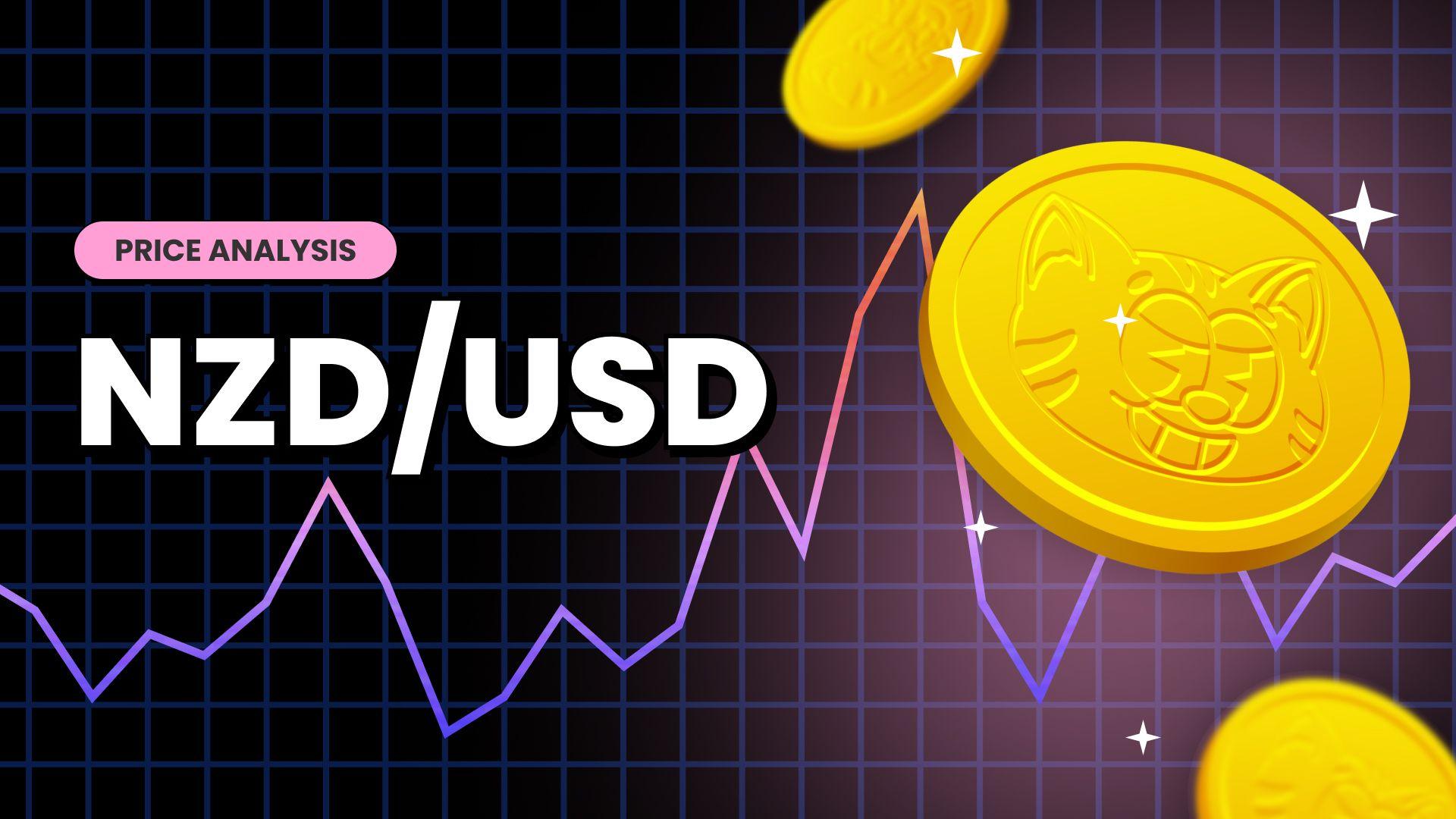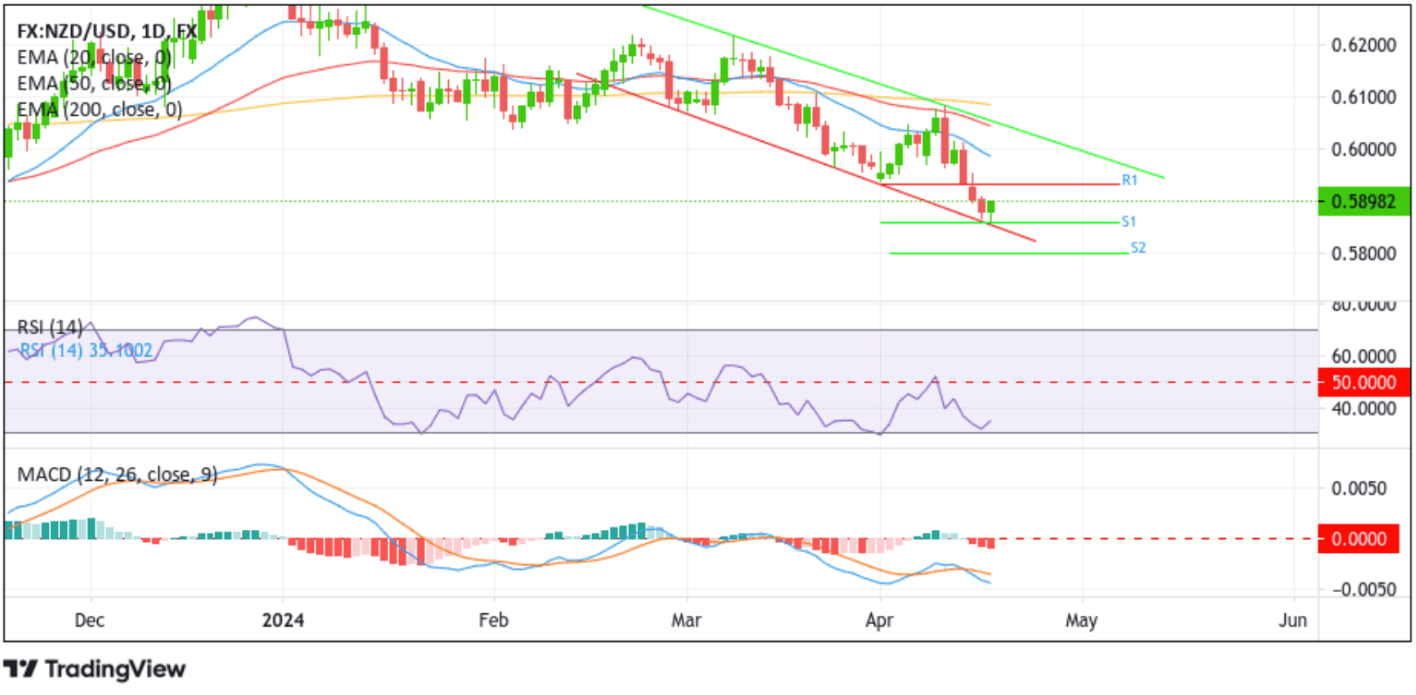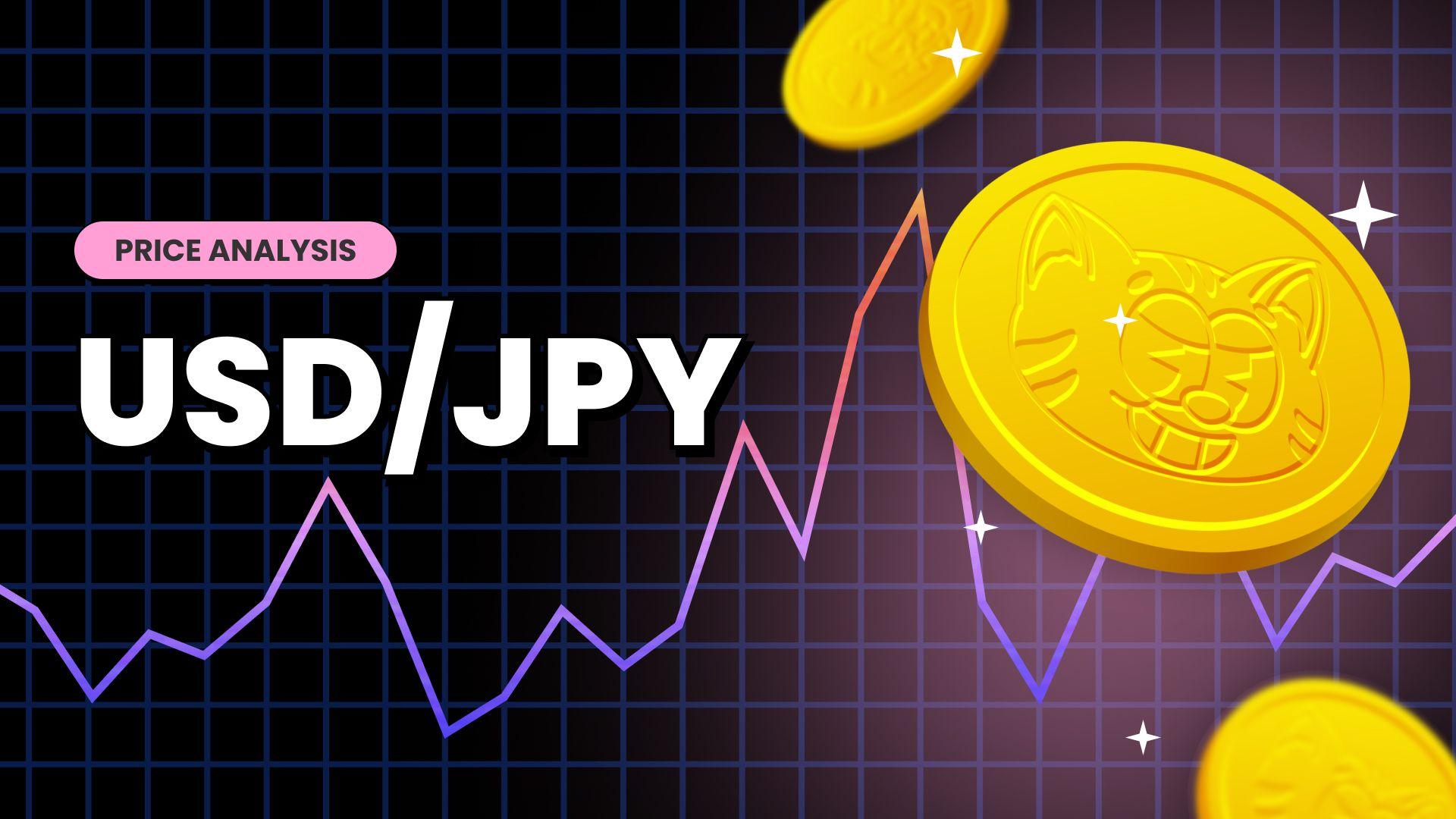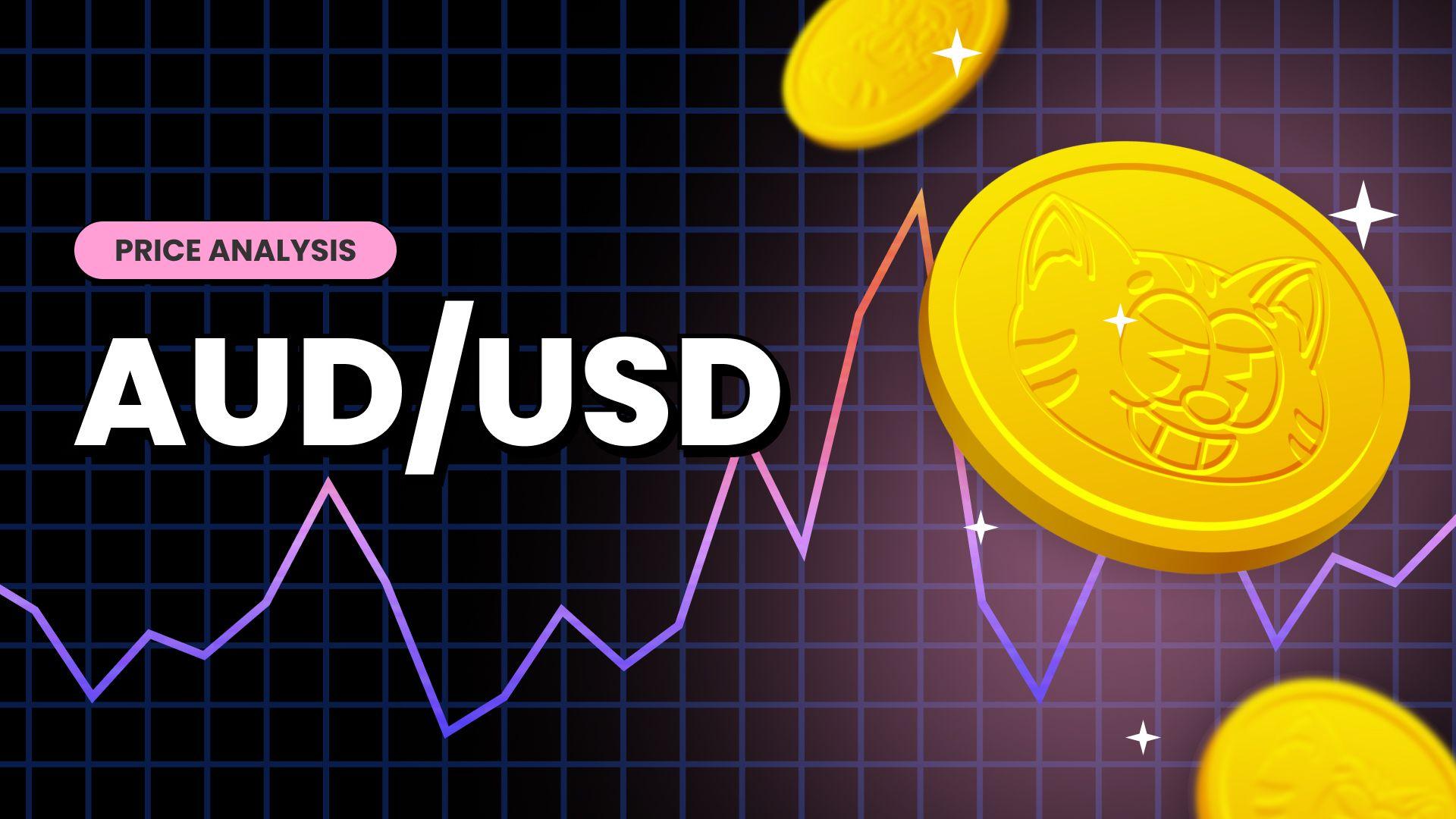NZD/USD Bounces Sharply From A Five-Month Low And Retakes 0.58800s, Upside Potential Remains Limited






Key Takeaways:
- The NZD/USD pair caught aggressive bids on Wednesday and rebounded from a five-month low
- Despite inflation cooling further in the first quarter of 2024, it remains above RBNZ's 1%-3% target, suggesting the bank could stick to its hawkish stance further
- The upside for the NZD/USD pair seems limited amid a stronger U.S. dollar across the board, supported by hawkish Fed market expectations
The NZD/USD cross attracted some dip-buying on Wednesday during the early Asian session and bounced off from a five-month low/0.58606 level earlier. The momentum lifted spot prices above 0.58800 and helped limit part of the previous day's losses, but it remains under heavy bearish pressure amid the generally stronger U.S. dollar.
The catalyst for today's early-Asian session NZD/USD sharp pullback could be attributed to growing market expectations that the Reserve Bank of New Zealand (RBNZ) will prolong its hawkish stance until the third quarter of 2024 before cutting rates.

This comes amid a softer inflation data report, which, despite showing a further slowdown in headline Inflation in New Zealand, remained well above the target level of 1% to 3%. The annual inflation rate in New Zealand eased to 4% in the March quarter of 2024, from 4.7% in the fourth quarter, a Statistics New Zealand data report released earlier today showed.
Further lending support to the Kiwi and helping cap the downside for the NZD/USD in the meantime was the upbeat Chinese macro data released on Tuesday. The data showed the Chinese economy advanced 5.3% yoy in Q1 of 2024, exceeding market forecasts of 5.0% and slightly accelerating from a 5.2% growth in the prior period. In another report, China's fixed-asset investment rose by 4.5% year-on-year from January to March 2024, beating market forecasts of 4.3% and up from a 4.2% increase in the previous month.
Despite the combination of positive factors, the upside for the NZD/USD cross seems limited. The U.S. dollar is still supported by elevated U.S. treasury bond yields bolstered by firm hawkish Fed expectations. This suggests that the current price action runs the chance of fizzling out sooner or later, and the path of least resistance for the major currency pair is to the upside.

In fact, markets feel convinced that the Fed will delay cutting rates and prolong its hawkish stance through 2024 after Fed Chair Jerome Powell said on Tuesday that interest rates could need to stay higher for longer as the battle to bring back to its 2% target is far from over.
Jerome Powell, while speaking at the Washington Forum on the Canadian Economy, said, "More recent data shows solid growth and continued strength in the labor market, but also a lack of further progress so far this year on returning to our 2% inflation goal,"
Those comments echo recent statements from other central bank officials who have also voiced their support for leaving rates elevated until inflation drops sustainably to the Fed's 2% target.
Powell's comments came a day after a U.S. Census Bureau data report showed consumer spending at the retail level rose strongly compared to the market consensus in March, suggesting resilience in consumer spending even as inflation remains persistent.
The more robust U.S. retail sales figures, along with last week's U.S. inflation numbers and earlier this month's hot job numbers, reinforce market expectations that the Fed may not move to lower interest rates as soon as the June meeting but instead have to wait further before starting to cut rates, probably toward late 2024.
CME's Fed Watch tool shows that markets are now anticipating the first rate cut in July or September rather than June. The odds of a June rate cut are currently down to 6.5% from 59.1% one week ago.
That said, the greenback continues to draw support from rising geopolitical tensions amid the ongoing conflicts in the Middle East following Iran's recent attack on Israel. Any escalation in the conflict would increase the greenback's safe-haven appeal, helping further downward pressure on the NZD/USD pair.
As we advance, without any significant market-moving economic news data, the Treasury bond yields and the general market risk sentiment will continue to influence U.S. dollar dynamics and ultimately provide directional impetus to the NZD/USD cross.
Technical Outlook: One-Day NZD/USD Price Chart

NZD/USD price is completely bearish, as spelt by the technical oscillators on the daily chart. Moreover, the price has been trading within a multi-week descending channel for the past two months, and its inability to break above the walls of the upper limit of the channel suggests further selling ahead for the NZD/USD cross. Furthermore, the fundamental factors favour further U.S. dollar buying, suggesting Kiwi Bull's latest attempt to keep its head above the water while attempting to reverse some of its losses runs the chances of fizzling out sooner rather than later.
That said, above the current price level, the first level of resistance is seen at 0.61245. If the price pierces this barrier, the next resistance level is at 0.60434, which coincides with the 50-day(red) EMA level.
On further strength, the price could rise toward the upper limit of the multi-week descending channel. If the price breaks above this key resistance level, it could accelerate further to tag the technically strong 200-day(yellow) EMA level at 0.60830. A convincing move above this level would negate the overall bearish outlook and act as a fresh trigger for new sellers to jump in, paving the way for aggressive technical selling around the NZD/USD pair.
On the downside, the 0.58592 level (S1) protects the immediate downside of the NZD/USD pair. A clean move below this level will pave the way for a drop toward the lower limit of the multi-week descending channel pattern. A decisive break below this level would reaffirm the bearish thesis and pave the way for dipper losses around the NZD/USD pair. NZD/USD price could then accelerate its drop below the 0.58000 mark to seek support at the 0.57991 level, about which, if this level fails to hold, the price could decline further toward the 2023 YTD low at 0.57693.


